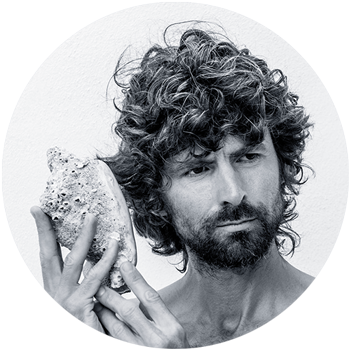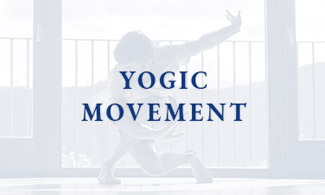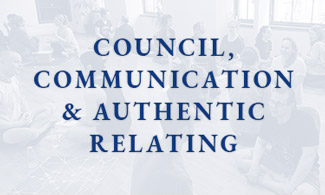
Prāṇa and Prāṇāyāma – An Anecdote and Some Reflections
I heard an interesting story from one of my Sanskṛt teachers, let’s call him the Professor. This teacher is a resident of Mysore, a seat of traditional Sanskṛt learning, and also in recent times a place where at certain times of the year concentrations of foreign yoga students come to study and practice at schools in the city. Some of these students are keen to explore teachings of yoga as they are encoded in Sanskṛt texts. And some have found their way to Mysore-resident Sanskritists who can help them gain closer access to the teachings enshrined in the glorious poetry of the Bhagavad Gītā, or the ultra pared down Yoga Sūtra for example.
One such student who had found his way to my teacher was particularly interested in prāṇa, and in prāṇāyāma. This term prāṇāyāma, like āsana, is intrinsic both to the classical, holistic path of Patañjalian yoga: what we might call the yoga of the whole human being; and to haṭha yoga: which we might consider the Tantric technology which seeks to harness and harmonise the potential and energy (prāṇa) of the human bodily vehicle so it can most effectively and efficiently help us move towards yoga, integration and the ultimate aim of life.
This student was already teaching prāṇāyāma. He had studied it with various Indian teachers, and knew that prāṇāyāma was not merely breath control, or breathing exercises, but the refinement and extension of the very life force itself. He knew that prāṇa is not mere breath, though breath is one of the mechanisms through which prāṇa, the vital force, the sap of life, moves and circulates in us. He also knew from his experience that some of the breathing excercises that are included under the banner of ‘prāṇāyāma practice’ had certainly helped him refine his understanding of his own life energy. This had also caused him to feel that he was in a sense extending his life. Even if these practices were not going to postpone his death, they were already helping him live each day more richly and fully, with greater appreciation for the amazing opportunity of being alive as a human being, with greater relish for the myriad, subtle flavours of life experience.
However, this student also had an inkling that these prāṇāyāma practices could actually extend his physical lifespan, perhaps even dramatically. He had heard stories of ṛṣi-s, yogic seers, who had mastered prāṇa and were as if immortal. So when he heard of this great Sanskritist dwelling in Mysore, who had a real problem saying no when someone asked to study with him, he thought he should approach him. If this Sanskrit teacher was as great as people whispered, if his knowledge of the Sanskrit tradition was as mind-bogglingly vast as rumoured, then surely he would know of passages that spoke of the secrets of prāṇa, perhaps he would even be able to decode them for him.
This student was no newcomer to India either. He had been coming and studying with Indian teachers for over a decade. He knew they operated differently from teachers in some other places. He knew for example, that rather than avertising their knowledge or expertise, the real pukka pundits often shrouded the depth of their learning. He knew this was especially the case around esoteric matters and all the more so if the subject in question could at all be seen to be personal, as prāṇa, the question of our life force and how we relate to it, undeniably is.
So, the student chose to approach the matter ‘from the side’ as it were, a tactic he had found could bear rich fruit when interacting with some of his previous Indian teachers. He arranged to meet the Professor, and asked him if he might help him read Patañjali’s Yoga Sūtra in the original Sanskrit.
So far, the rumours proved true. The Indian Sanskrit expert could not say no. Even though he clearly had all manner of demands on his time and expertise: people asking him to translate books into Sanskrit from the local language Kannada, from Sanskrit into English, to write editorials and educational stories for Sanskrit magazines and newspapers, to write textbooks for university courses, he agreed to read Patañjali with this foreign seeker.
They began to meet three times a week. The foreign student was thrilled. The text began to take on new significance as the Professor unpacked it, and on days when he was feeling ‘higher energy’, when his prāṇa was circulating with greater efficiency, he would illustrate the teachings with all manner of compelling and often colourful story. The student also found that he could influence the pace with which they moved through the text by how much curiosity he showed in certain words and concepts presented in the Sūtra-s. Of course, what he was most interested in was asking the Professor about prāṇa, and prāṇāyāma, which Patañjali mentions some eighty sūtra-s into his work.
As they approached this section, the student felt his excitement mount. He felt that he had now won, as far as was possible in the circumstances, the confidence of the Professor, and that he would be able to draw from him any secret knowledge of prāṇa.
When they reached the relevant section of the text, the student was quite direct. He asked his teacher what he knew of the mysteries of prāṇa. The student had heard of yogic masters of prāṇāyāma who lived for centuries, millennia even, who breathed just a single breath of Himālayan air a day, who could burn up and digest mountains of rice and dal, and just as easily live hale and hearty for years without any physical food at all. Did the professor know of any such yogis?
‘Well, I don’t know, but I can tell you a story’. For the student, the professor’s stories were almost always his favourite part of their classes together, and he leaned slightly forward as if to be able to more deeply absorb whatever riches the Professor was about to share.
‘So it is said that there are these Himālayan yogi-s who live for ages, who know the secrets of prāṇa. One time, such a yogi visited Mysore. He was to give a talk, on the wisdom of yoga. Now being an ancient Himālayan yogi he knew no modern Indian language, and spoke only the language of mountain ṛṣi-s. However, he had a young assistant with him, who knew the ṛṣis’ tongue and translated his speech into Sanskrit, which I then translated into our local Kannada. After his speech, he asked if there were any questions. One man in the audience piped up immediately:
“Er, well, sir, that is all very interesting and I’m sure we are all very grateful for the master sharing his insights, but what I want to know is… is he really one thousand two hundred and seventy three years old?”
I translated the question, putting it to the young assistant in Sanskrit. And do you know what he said?
The assistant didn’t even put the question to his master, he just said:
“I don’t know, I’ve only been with him for the last three hundred and forty-two years so I couldn’t say.”
Which brought the student to laughter, as it did to some in the audience that day.
And hopefully it made you laugh too, and perhaps also raise a question: why do some yogi-s want to live so long? What is the point of extending the life force like this?
In the Indian system, there are said to be four ‘aims of life’ (puruṣārthāḥ): artha, kāma, dharma, mokṣa.
Artha means ‘the means’, it refers to the material needs of life, food, shelter, how we make a living. Kāma in this context refers to pleasures and how we enjoy ourselves. It is said in the Indian tradition that it is our duty to enjoy this gift of a human birth, for when we truly enjoy, in a deep sense, we can learn more quickly. Dharma is the action which sustains and supports the wellbeing of the whole, it is sometimes rendered as duty, the law, righteousness. Mokṣa is the ultimate aim of life, liberation.
Another of my Sanskrit teacher’s gurus has said on this topic: ‘Do not focus on mokṣa; instead, focus on making your artha and your kāma dharma, then mokṣa will come by itself.’
But who is able to do this? It seems perhaps easier to meet masters of prāṇāyāma who have lived for centuries than people who have become truly free from conditionings and limiting ideas, or who know how to live always in dharma.
And this is one reason why some yogi-s place such emphasis on prāṇāyāma. This gift of a human life is so precious that we need to cherish it. They say in the Indian tradition that a body without a soul is a corpse, but a soul without a body is stuck. When the soul comes into embodiment, it can journey towards its deep longing: the return to wholeness, to freedom from limitation and conditioning, to remembering its essence. The body may be the vehicle for the soul, and the soul may be the underlying animating force of the body, but this bodily vehicle needs prāṇa to run. And so, Yoga, the practical school of Indian Philosophy encourages us to respect and cherish prāṇa, to develop and deepen our relationship with our life force and our understanding of how we can work with it skillfully. A long, healthy lifespan gives us more time to research the mystery of life, fathom the depths of who we really are and come perhaps to self-realisation. Āyurveda then, the Indian Art and Science of a long, healthy lifespan is a foundation and companion for Yoga.
From a certain perspective, any practice, observance or technique that helps us extend the life force, invite the breath into easier and more efficient patterns, that improves our digestive and assimilative capacities, that bolsters and sustains our energy can be considered a type of prāṇāyāma. Any technique that helps prāṇa circulate more efficiently, that encourages true balance and holistic health can be considered prāṇāyama and a type of yoga practice.

James Boag | Whole Life Yoga
The yoga of the whole human being. Practical philosophy, storytelling, movement, inquiry, looking in ways that reach beyond our habitual ways of looking.
Listen to James’ unique whole life yoga perspectives on the WHOLE LIFE YOGA podcast.











